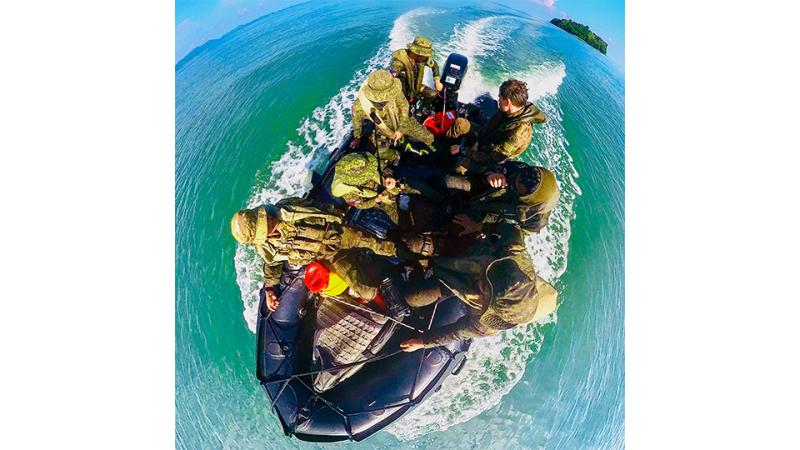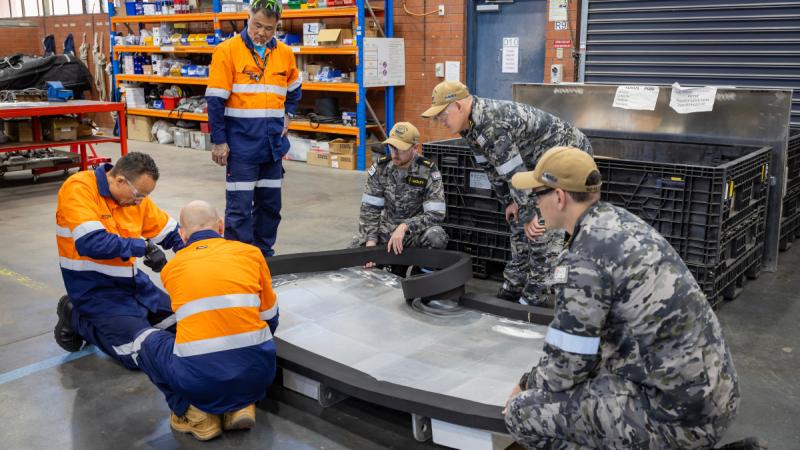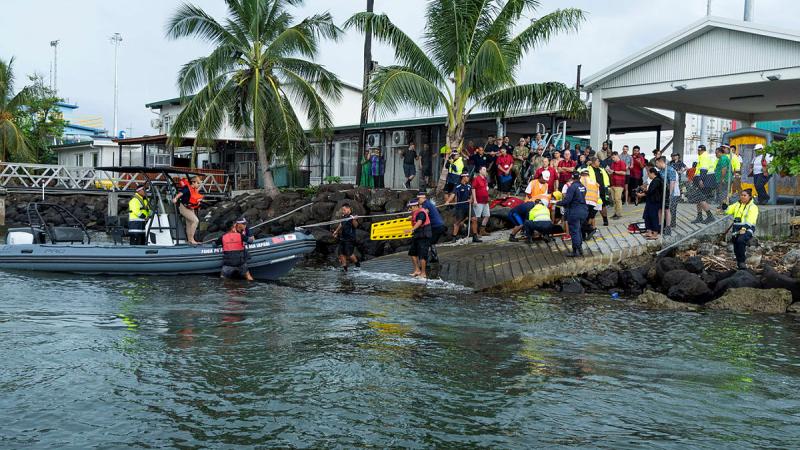8 July 2025
Australia’s training missile maintenance capability has reached a great milestone.
Training missiles serviced by the Missile Maintenance Facility Amberley (MMFA) across its 15-year lifespan have clocked up a combined 100,000-plus flying hours.
MMFA conducts repairs and maintenance on the CATM-9X Sidewinder, AIM-120 AMRAAM and AGM-88 HARM/AARGM family of missiles, which are training versions of their live counterparts. The US-manufactured missiles are primarily used on the F-18 platforms at Amberley – Super Hornets and Growlers.
Armament technicians practise loading aircraft with missiles while aircrew practise flying with them and engaging targets.
MMFA Production Manager Paul Dowdle said the high number of flying hours was due to the F-18s operating with at least one training missile on almost every sortie in the past 15 years, and now often with three or more.
“100,000 flying hours is an amazing number to reach given that Super Hornet and Growler sorties are often less than two hours in duration, and that the weapons involved are operated at high speed and often under high g-forces on the external hard points of the aircraft,” Mr Dowdle said.
“Past Air Force practice has often been to operate training missiles in programmed guided weapons activities interspersed with bombing and gunnery programs. This would mean that training missiles would have longer periods of downtime where they could be serviced or repaired, but that is not the case at Amberley.”
MMFA was established in late 2010 in preparation for Super Hornet operations commencing at Amberley.
Previously, all unserviceable F-18 training missiles had to be sent to the original equipment manufacturer (OEM) in the US for repair. This cost hundreds of thousands of dollars and involved extensive turnaround times in returning them to Australia.
'It is essential to Air Force warfighters that our air-to-air missiles work first time, every time.'
Today, only deeper level repairs need to be performed at overseas OEMs.
“In my view, MMFA is an example of best-practice weapon maintenance support to operational units,” Mr Dowdle said.
“The ability to immediately assess and troubleshoot a weapon adjacent to where flying operations are being conducted, and then to conduct repairs, have been key factors in supporting Air Force operational training needs.”
Staff Officer Weapons at Headquarters Air Command, Squadron Leader Evan McCloy, oversees all guided weapons employed by the Air Force and NASAMS for Army. He said the MMFA provided a responsive and deployable capability that supported ADF skill sets for employing live weapons.
“Considering they’re only going to be used once, and only in times of conflict, it is essential to Air Force warfighters that our air-to-air missiles work first time, every time,” Squadron Leader McCloy said.
MMFA, which sits within the Maritime and Maintenance Branch of Guided Weapons and Explosive Ordnance Group, is an APS-led, integrated APS/Air Force maintenance team. In addition to maintaining training missiles, MMFA also supports maintenance of live missiles and aircraft bombs.
It supports three flying units at RAAF Base Amberley (1 Squadron, 6 Squadron and 1 Squadron Training Flight), while also providing assistance to land guided weapon capabilities and other emerging weapon programs.
“Previous guided weapon maintenance at 6 Squadron supporting the AGM-142 weapon system on the F-111 was an Air Force-only activity,” Mr Dowdle said.
“MMFA’s footprint has expanded markedly over its 15 years of operation to involve a range of weapon types that continue to grow as other capabilities progress into service.
“The MMFA team is very proud of achieving this milestone and looks forward to the challenges of the future where legacy weapons are maintained alongside new capabilities.
“Most importantly, the flying hour milestone has been achieved through the efforts of past and present MMFA team members and these efforts over a decade and a half are to be applauded.”


